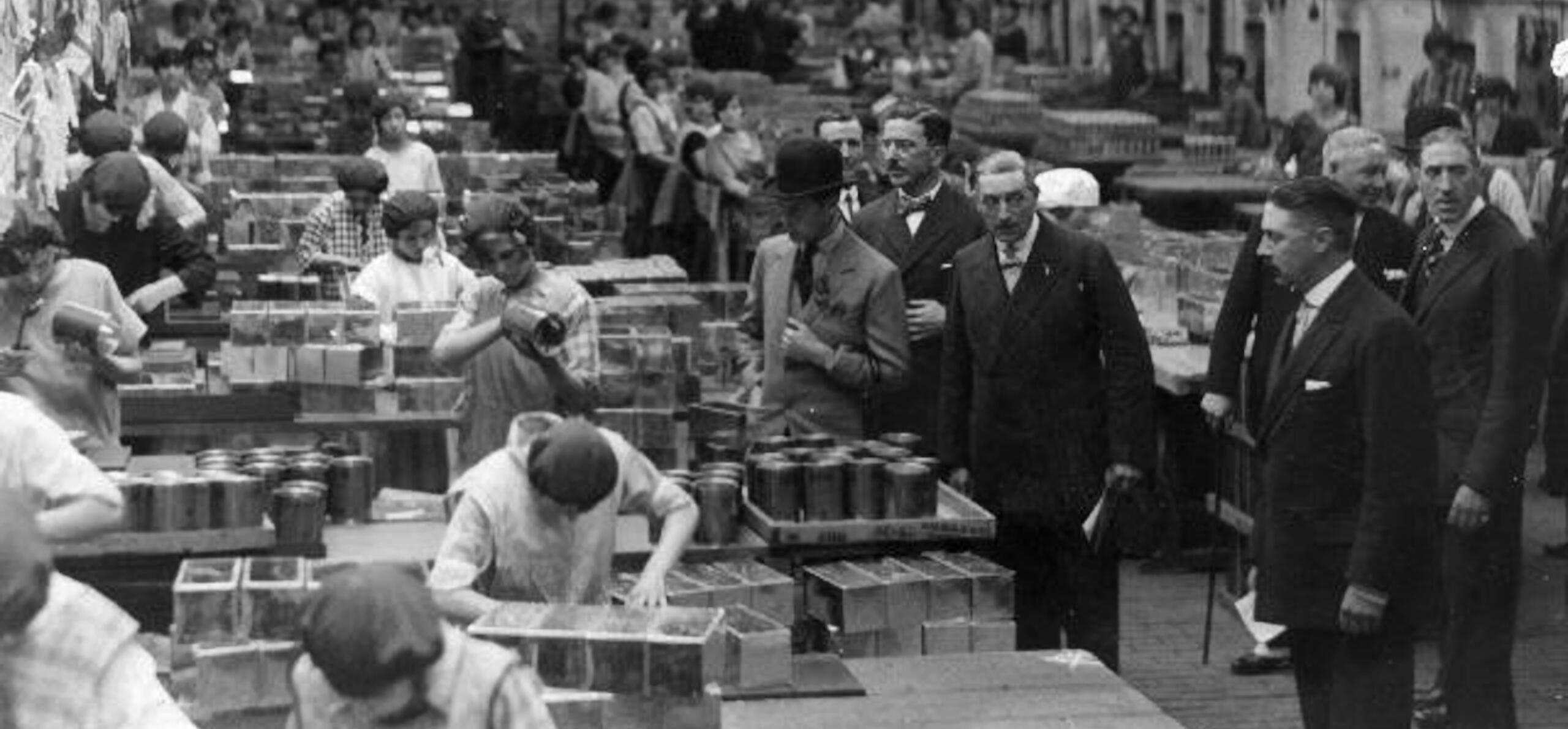Many of the smaller companies never resumed fancy tin production after the First World War and it wasn't until 1922 that Huntley & Palmers returned to normal production. Over the next decade the new Christmas tins were at their most fanciful and included a garden roller, a penny-in-the-slot machine, a hand camera and a Huntley & Palmers delivery van.
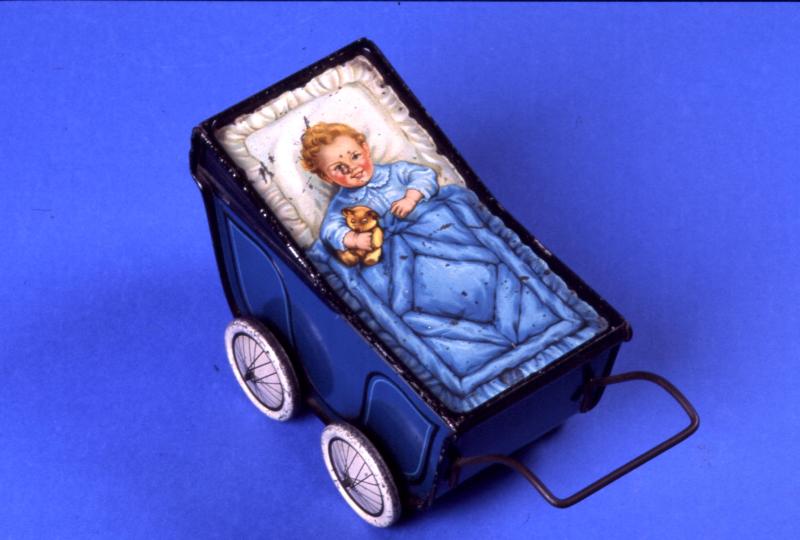
One of the main developments after the First World War was the production of tins to be used as children's toys; there had been a few made in the Edwardian period, but, with Germany's economy in ruins, toy imports had dried up. (REDMG : 1992.2.543)
Copies of antiques and fine art
As the middle classes were becoming wealthier and better-educated, Huntley & Palmers created tins which copied fine art objects. These included Chinese Vases and Royal Doulton pottery and enabled the middle classes to fulfill aspirations of ownership when they would never have been able to afford the original object.
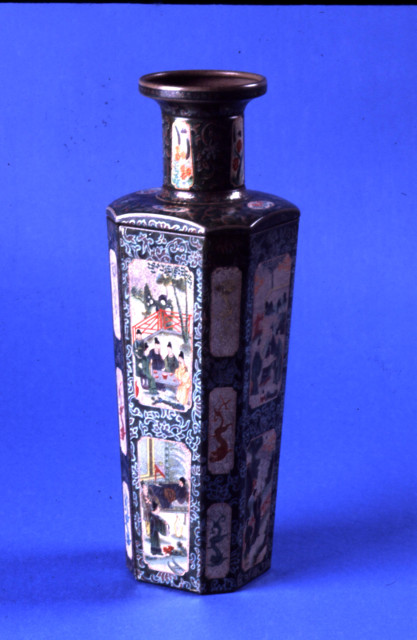
This tin was so popular with customers that in 1934 Huntley & Palmers issued Worcester Vase in the same shape. (REDMG : 1969.37.2)
Changes to Huntley, Boorne & Stevens
In 1918 Huntley, Boorne & Stevens became a wholly-owned subsidiary of Huntley & Palmers. When His Royal Highness, the Prince of Wales, visited the Huntley & Palmers factory in June 1926, a tour around Huntley, Boorne and Stevens was included.
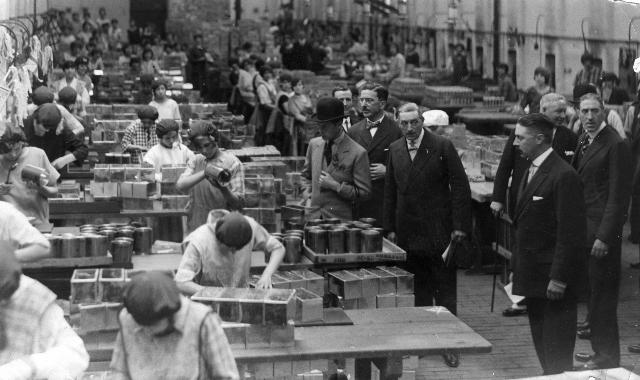
When the future King Edward VIII visited Huntley Boorne & Stevens he was smoking a cigarette. Even though the factory had a strict rule no smoking rule, no one wanted to tell the Prince of Wales that. (REDMG : 1998.30.17)
A Peek Frean tin
In 1921 Huntley & Palmers joined with Peek Frean to form Associated Biscuit Manufacturers Ltd. Peek Frean also made fancy biscuit tins and this tin was issued by them in 1935. The outer drum illustrates a grandstand and racegoers and the inner revolving drum illustrates horses. The biscuits were contained inside the inner drum.
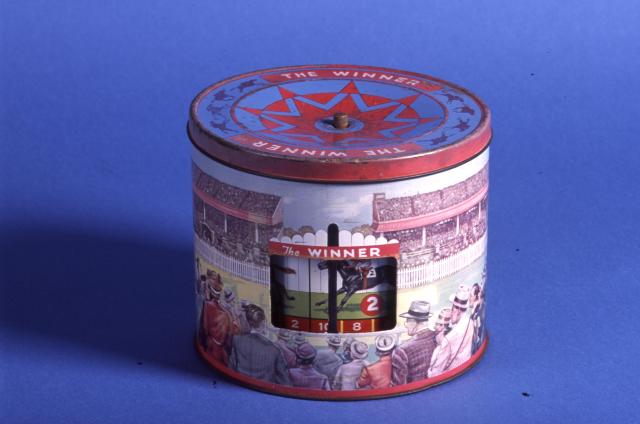
This tin was produced by Peek Frean for the English market. However, a very similar tin in yellow and green and displaying a greyhound race was produced for the Australian market. (REDMG : 1992.2.1282)
Change in designs
From the late 1920s increased mechanization and higher wages led to tins that were much simpler in shape and fewer of the ornate designs were manufactured. The newer tins were decorated with images and photographs of objects or people, in particular the Royal Family.
Edward VIII
This tin was made as a special order in preparation for the celebration of King Edward VIII's coronation. When Edward abdicated the throne to marry the American divorcée, Wallis Simpson, production of the tin was cancelled.
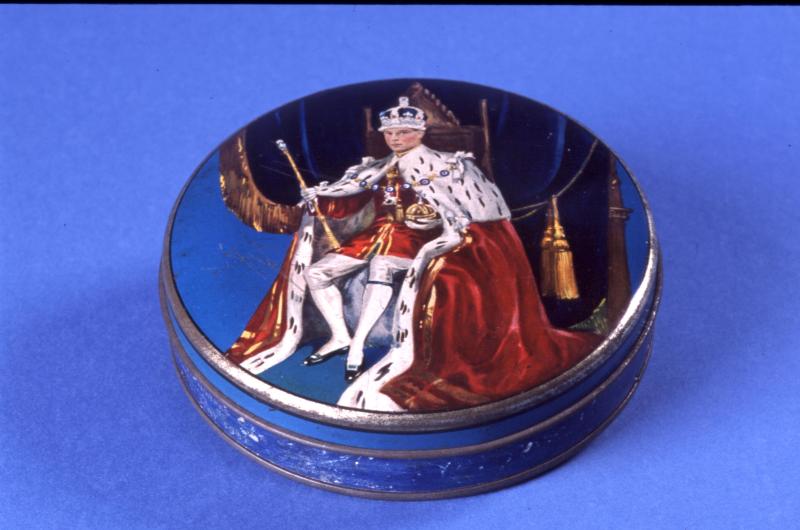
The is a mock-up of a tin for an order was placed by the Cleethorpes Urban District Council of Cleethorpes. It was never Edward VIII abdicated before his planned coronation on 27 May 1937. (REDMG : 1992.2.507)
The next section explores different tins from 1915 to 1940
